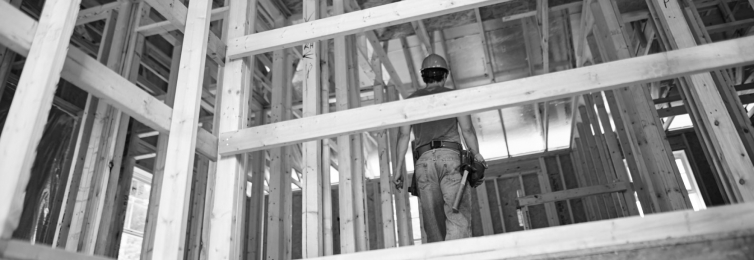Once construction is complete, is your homebuyer getting a defect-free home, or does it simply mean that you can move on to the next project? Quality control begins on the job-site with you, the general contractor.
Without quality control measures in place, costly callbacks eat away at profits and you risk customer dissatisfaction. If you haven’t met your homebuyer’s expectations, then you can be sure your homebuyer’s neighbors, coworkers, friends, and family will hear about it. Customer dissatisfaction can spread rapidly through social media channels–and scare off potential clients. Your reputation is on the line with every housing start. Let’s consider how to protect your business from the very beginning.
Do your homework on new subs.
Your quality initiative begins with the selection of subcontractors. Before you begin any project, have a well-written subcontractor agreement. Never begin without one! It should include plans and specifications, scope of work, quality of work, and insurance requirements. You can find an example from Builders Mutual here.
Find and retain quality subcontractors committed to their trades. Network with area builders to find qualified candidates. Your local Home Builders Association is a good place to meet the subcontractors in the area, particularly those invested in their profession. Your local builder’s supply may also be able to refer you to reputable subs.
Develop long-term relationships with your subs. Be advised, this may mean that the lowest bid doesn’t always get the contract. Continue to do business with those that meet your standards, and move away from those that don’t. Of course, always check references and review the subcontractor’s past work. Ask – what is the experience level of the owner? What is the experience level of the subcontractor’s crew? Quality usually suffers when the majority of the crew are new employees still riding “the learning curve.”
Near Boone, NC, a husband-and-wife team has made a great living for more than 10 years building two to three custom homes a year. They had always done their own framing, but recently they decided to hire a framer. Framers from all over North Carolina look for work in the mountains, where the housing market has stayed strong, so they had plenty of options. One framer, in particular, had 30 employees and carried workers’ compensation insurance but no general liability. This was the first red flag, but they considered overlooking it and asked for references. The framer proudly offered two references, each of whom the couple called. Neither reference had ever heard of the framer. Moral of the story: risky partnerships may camouflage themselves at first glance, but due diligence can help you avoid crisis.
Monitor subs before problems are buried.
Without a reliable supervisor, even the strongest team of subs may not make the grade. The best supervisors won’t hesitate to alert you if they suspect a problem; however, don’t overburden them. One job-site visit a day for 30 minutes is not nearly enough. Give supervisors the opportunity to do their job right and pay appropriate attention to each location.
Quality Assurance is important throughout the construction, but particularly so before the drywall stage. Once the drywall is set, your ability to identify and mitigate issues is severely hampered. At that point, defective work is in effect “under the radar,” but can manifest itself years later in the form of costly litigation. Many general contractors have their supervisors document the progress of each job-site through use of a daily log. Digital photos can also be an effective way to document each stage of the project.
Continue communication with your customer.
With these controls in place, you’ve laid the foundation for a well-built home, but you haven’t addressed customer communication. For custom builds, invite the homebuyer to the job-site during various stages of construction. Explain the quality measures you’ve taken to ensure a defect-free home. As an added benefit, you’ve discouraged unsupervised visits where a curious buyer may have an accident for which you may be held liable.
When construction is complete, address any punch list problems during a final walk-through. Then, accompany the homebuyer on a subsequent walk-through. To educate your homebuyer, offer information on what to expect with new construction. Homebuyers can expect the occasional nail pop or slight hairline crack without fearing a construction defect.
If they have a concern, your contract, which includes “right to cure” language, gives you the opportunity to correct the problem. Ask the homebuyer to contact you first, but ensure the homebuyer has a complete list of sub names and contact numbers. You may want to consider providing an extended warranty product. Even without it, though, remember that you may be required to repair latent defects discovered within a number of years of the purchase of the home because of your state’s statute of repose (varies by state).
Exceed your customer’s expectations by following up at three, six, nine, and 12 months without being prompted to do so. Finally, encourage customer feedback on your timeliness and communication and the quality of construction. With all of these quality control measures in place, your customers won’t simply be satisfied; they’ll be delighted.
Build your business upon sound business practices, with quality control at the core. This commitment will decrease callbacks, increase profits, and improve customer satisfaction.
Content reviewed and updated 10-2021.




 Find an
Find an